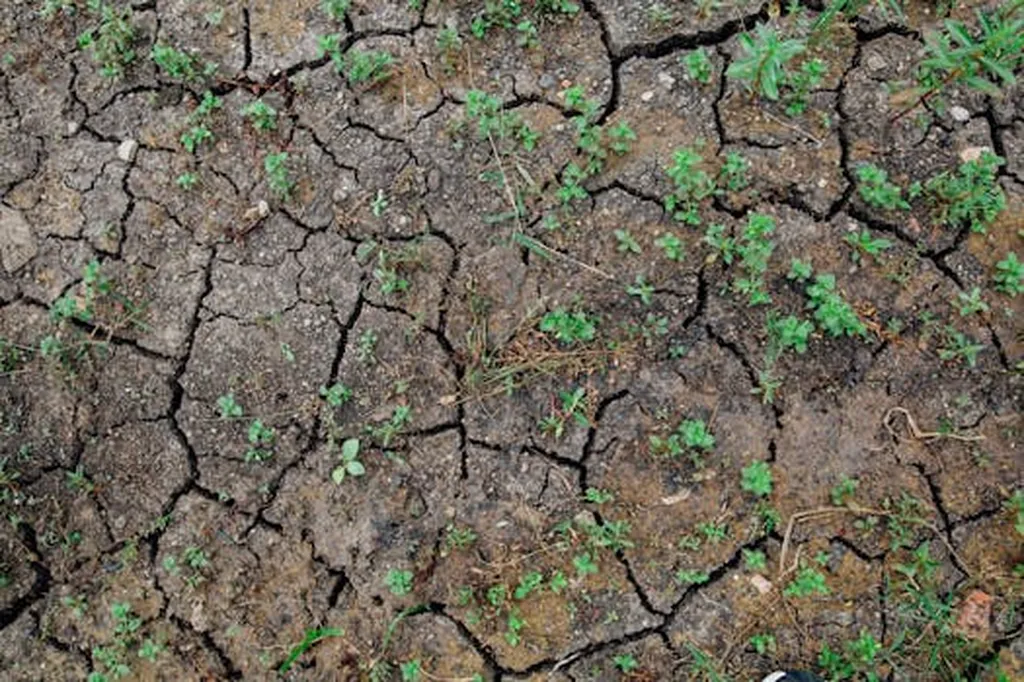In the quest to bolster plant resilience against drought, a recent study published in *Frontiers in Plant Science* has unveiled promising insights into the symbiotic relationship between Tuber indicum, a type of truffle, and Pinus armandii, a pine tree species. The research, led by Lanlan Huang from the College of Yunnan Rural Revitalizing Education at Yunnan Open University, explores how T. indicum colonization influences plant physiological responses, rhizosphere metabolic profiles, and microbial community dynamics under varying water regimes.
The findings suggest that T. indicum colonization significantly enhances the drought tolerance of Pinus armandii seedlings. Under moderate drought stress, the colonization increased the contents of chlorophyll a and total pigments while decreasing the malondialdehyde content in the leaves. Malondialdehyde is a marker of oxidative stress, indicating that the truffle colonization helps mitigate damage caused by drought conditions.
“Our results show that T. indicum colonization can modulate the host plant’s physiological responses, making it more resilient to drought,” Huang explained. “This has significant implications for ecological restoration and truffle cultivation in drought-prone areas.”
The study also delved into the rhizosphere metabolomic profiles and microbial community dynamics. Under moderate and severe drought stresses, the diversity of the mycorrhizosphere bacterial community in the T. indicum-colonized group was significantly lower than that in the control group. However, the bacterial community structures remained similar across different drought conditions.
Metabolic analysis revealed that carbohydrates and their derivatives were the most upregulated, while amino acids and their derivatives were the most downregulated differential expressed metabolites in T. indicum-colonized seedlings compared to the control group. This metabolic shift suggests that the truffle colonization alters the plant’s metabolic pathways to enhance drought tolerance.
One of the most intriguing findings was the significant positive correlation between the relative abundance of Nocardioides albus, a type of bacteria, and trans-2-hexenal, a compound involved in plant defense mechanisms. Trans-2-hexenal showed a significant negative correlation with malondialdehyde content and a significant positive correlation with the content of photosynthetic pigments, implying that N. albus might play a crucial role in regulating plant drought tolerance.
These findings open up new avenues for the application of T. indicum mycorrhizal seedlings in drought-prone areas. By enhancing plant drought tolerance, this symbiotic relationship could revolutionize ecological restoration efforts and truffle cultivation, offering a sustainable solution for agriculture in regions affected by water scarcity.
As the agriculture sector grapples with the challenges posed by climate change, this research provides a beacon of hope. The commercial impacts could be substantial, with potential applications ranging from reforestation projects to the cultivation of high-value truffles. The study not only advances our understanding of plant-microbe interactions but also paves the way for innovative agricultural practices that can thrive in adverse conditions.
In the words of Huang, “This research underscores the importance of exploring symbiotic relationships in agriculture. By harnessing the power of mycorrhizal fungi, we can develop more resilient crops and contribute to sustainable agriculture.”
As the field of agritech continues to evolve, the insights from this study could shape future developments, driving the industry towards more sustainable and resilient agricultural practices. The potential is vast, and the implications are profound, offering a glimpse into a future where agriculture and ecology coexist harmoniously.

